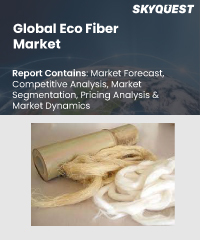
Report ID: SQMIG15A2193

Report ID:
SQMIG15A2193 |
Region:
Global |
Published Date: February, 2024
Pages:
157
|
Tables:
89 |
Figures:
76
The global eco fiber market is witnessing significant growth and competition as sustainability and environmental consciousness become more prevalent in the textile industry. Eco fibers are derived from renewable sources and are produced using environmentally friendly manufacturing processes. They offer a greener alternative to traditional synthetic fibers, reducing the carbon footprint and environmental impact of textile production.
Top Player’s Company Profiles
Our industry expert will work with you to provide you with customized data in a short amount of time.
REQUEST FREE CUSTOMIZATIONWant to customize this report? This report can be personalized according to your needs. Our analysts and industry experts will work directly with you to understand your requirements and provide you with customized data in a short amount of time. We offer $1000 worth of FREE customization at the time of purchase.

Report ID: SQMIG15A2193